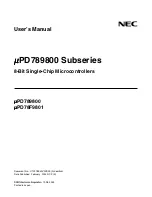
428
Configuring IGMP Snooping and MVR
Information About IGMP Snooping and MVR
Figure 66
Second Host Joining a Multicast Group
Leaving a Multicast Group
The router sends periodic multicast general queries, and the switch forwards these queries through all ports in the VLAN.
Interested hosts respond to the queries. If at least one host in the VLAN wishes to receive multicast traffic, the router
continues forwarding the multicast traffic to the VLAN. The switch forwards multicast group traffic only to those hosts
listed in the forwarding table for that IP multicast group maintained by IGMP snooping.
When hosts want to leave a multicast group, they can silently leave, or they can send a leave message. When the switch
receives a leave message from a host, it sends a group-specific query to learn if any other devices connected to that
interface are interested in traffic for the specific multicast group. The switch then updates the forwarding table for that
MAC group so that only those hosts interested in receiving multicast traffic for the group are listed in the forwarding table.
If the router receives no reports from a VLAN, it removes the group for the VLAN from its IGMP cache.
Immediate Leave
Immediate Leave is only supported on IGMP Version 2 hosts.
The switch uses IGMP snooping Immediate Leave to remove from the forwarding table an interface that sends a leave
message without the switch sending group-specific queries to the interface. The VLAN interface is pruned from the
multicast tree for the multicast group specified in the original leave message. Immediate Leave ensures optimal
bandwidth management for all hosts on a switched network, even when multiple multicast groups are simultaneously in
use.
Note:
You should only use the Immediate Leave feature on VLANs where a single host is connected to each port. If
Immediate Leave is enabled in VLANs where more than one host is connected to a port, some hosts might inadvertently
be dropped.
When you enable IGMP Immediate Leave, the switch immediately removes a port when it detects an IGMP Version 2 leave
message on that port. You should only use the Immediate-Leave feature when there is a single receiver present on every
port in the VLAN.
Destination Address
Type of Packet
Ports
224.1.2.3
IGMP
1, 2, 5
Forwarding
table
CPU
Host 1
Host 2
Host 3
Host 4
Router A
PFC
VLAN
1
0
2
3
4
5
45751
Summary of Contents for IE 4000
Page 12: ...8 Configuration Overview Default Settings After Initial Switch Configuration ...
Page 52: ...48 Configuring Interfaces Monitoring and Maintaining the Interfaces ...
Page 108: ...104 Configuring Switch Clusters Additional References ...
Page 128: ...124 Performing Switch Administration Additional References ...
Page 130: ...126 Configuring PTP ...
Page 140: ...136 Configuring CIP Additional References ...
Page 146: ...142 Configuring SDM Templates Configuration Examples for Configuring SDM Templates ...
Page 192: ...188 Configuring Switch Based Authentication Additional References ...
Page 244: ...240 Configuring IEEE 802 1x Port Based Authentication Additional References ...
Page 298: ...294 Configuring VLANs Additional References ...
Page 336: ...332 Configuring STP Additional References ...
Page 408: ...404 Configuring DHCP Additional References ...
Page 450: ...446 Configuring IGMP Snooping and MVR Additional References ...
Page 490: ...486 Configuring SPAN and RSPAN Additional References ...
Page 502: ...498 Configuring Layer 2 NAT ...
Page 770: ...766 Configuring IPv6 MLD Snooping Related Documents ...
Page 930: ...926 Configuring IP Unicast Routing Related Documents ...
Page 976: ...972 Configuring Cisco IOS IP SLAs Operations Additional References ...
Page 978: ...974 Dying Gasp ...
Page 990: ...986 Configuring Enhanced Object Tracking Monitoring Enhanced Object Tracking ...
Page 994: ...990 Configuring MODBUS TCP Displaying MODBUS TCP Information ...
Page 996: ...992 Ethernet CFM ...
Page 1066: ...1062 Using an SD Card SD Card Alarms ...
















































